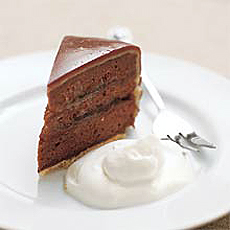
A blog post by Brandon Otto, Spring 2011
Grüß Gott!
The first week of Austria has ended, and the first full week of classes has started. It’s been interesting adjusting to life in Austria. Obviously, it’s not America, and there are some notable differences, such as about seven different trash cans (each for different types of trash) and weekly room checks that require keeping the room sparklingly clean. Plus there’s all the new people (or at least people I’ve never really gotten to know before) and the global feel. Having a Chinese roommate, a Slovakian priest concelebrating Mass, and Colombian and Scottish professors teaching classes makes the campus feel very international (as it is).
One of the biggest aspects of life in Austria is travelling. Our first or second day here, we already experienced that, with a trip to Maria Taferl (the second most important Marian pilgrimage site in Austria) and Melk Abbey (which was built in 1089), two very beautiful Baroque churches. Tours of Gaming and the Kartause were in the middle of the week, and Saturday was an all-day trip to Vienna.
Vienna is a city full of history. When you celebrate Mass above a crypt containing 143 of the Hapsburgs and then walk past a cathedral embedded with cannonballs from a Turkish invasion, you know history is close. After our guided tour of the city and lunch, we had free time. The group I was with started off visiting the National Treasures Museum (where we ran into many other FUS students). If you have free time in Vienna, I highly recommend this museum: its rambling room after room of historical artifacts, including, but not limited to, a narwhal horn (and who doesn’t want to see one of those in real life?). Did I forget to mention the countless reliquaries, including many pieces of the True Cross and a nail from the Crucifixion? All in all, it was well worth the price of admission. Following the visit to the museum, my friends and I spent a couple hours just walking around Vienna, admiring its beauty and finding small stores to check in, including a tea shop that had hijacked the last name of one of the people in our group. Eventually, after our feet were wearied from all the walking, we relaxed in a café recommended by some of our tour guides, full of handmade pastries. Sitting in a café with a hot drink and a pastry while conversing pleasantly with friends is a common European custom, and it was highly suggested by many people as something to do in Vienna. Normally, one gets coffee at a café, but I’m not a fan of coffee, so I ordered a hot chocolate with a kick: a shot of rum mixed in. It went very well with the Sachertorte I ordered, a famous chocolate cake invented in Vienna in 1832. Following the meal in the café, we returned to the bus, where we had a relaxing trip back to the Kartause. Sunday was a day of relaxing, and today has been all about learning the essences of being and the human person (aren’t philosophy classes great?).
Those have been the main highlights of my Austria experience so far. Hopefully I’ll have many more during our trip to Salzburg and Munich this weekend. Until next time, God bless! Auf wiedersehen!






